Most of us with vehicles on board the ferry spent the night in our campers at the Port of Colon in Panama, because it took so long to clear the vehicles through customs. But that was nothing compared to the 48 hours it took us to clear customs into Costa Rica. When we went through Costa Rica in late November, we were supposed to turn in the document for the temporary import of the truck. For some reason customs never took it and when we tried to re-enter Costa Rica their records showed our truck had never left the country. As the permit had expired, the problem could not be fixed. At least it couldn’t be fixed on a Saturday at the tiny border crossing we had chosen, a quiet little town called Rio Sereno. The agents from Costa Rica and Panama were very helpful and friendly. They suggested we drive to a major border crossing until it became apparent that, since we had just exported the truck and ourselves from Panama, we would have to re-enter Panama and that would be a bigger problem. The solution was to hang out in limbo at the border until Monday when the appropriate offices were open and the appropriate paperwork could be done. The police station was conveniently located between Panama Immigration and Customs and Costa Rica immigration and Customs, so we were invited to camp on the road across the street from the police station. The police kept a close eye on us, and at any given time at least one officer could be seen staring at us from across the street.
Each afternoon the clouds would build up and it would rain, with a rain as torrential as anything we have ever seen. Soon after we set up camp, Bill went over to immigration with a document just as the rain started. He ran back to the camper, leapt inside and skinned the top of his head on the door frame. Although the blood was minimal it looked terrible, so Nancy went to the nice folks at Panama Immigration to request directions to find a doctor. They called a cab and Bill was taken to the hospital. He returned after about an hour sporting a white skull cap and a prescription antibiotic cream. The doctor, nurse, prescription and bandages cost $9.00. Our Travel Medical Insurance costs us each $10.00 per day. The cream is remarkable; he has healed quickly.
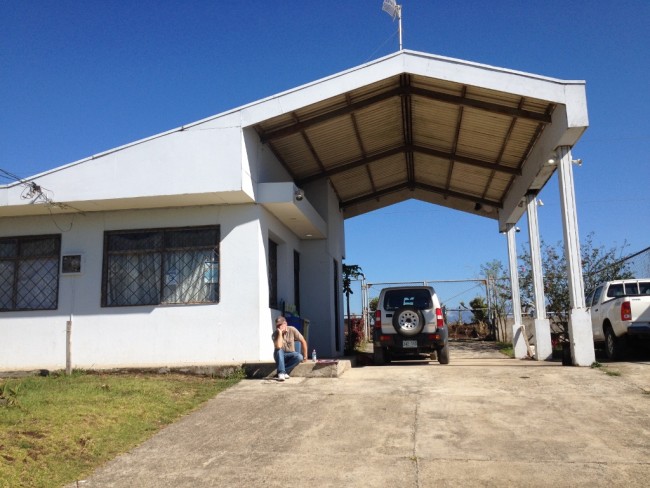
It took about 3 hours on Monday to get it sorted out at Costa Rica’s Customs and Immigration building.
On Monday we finally got the papers to proceed and drove into Costa Rica.
The night before we left Panama, we stayed in the garden of a Hostel in a lovely little town, Boquete that has been touted as one of the 4 best places in the world to retire. As a result, it is overrun with Americans of a certain age. Breakfast in a little restaurant and bakery was delightful. The restaurant’s washrooms with hot and cold running water, toilet paper, toilet seats and paper towels was a real treat.
The downside of our gypsy existence is our reliance on public washrooms. Public washrooms in Central America often lack soap, hot water, toilet paper and paper towels. The seasoned traveller carries their own, and knows that toilet paper cannot be put in the toilet. Instead it goes in the trash can. The amount of paper in the trash can is a sure indicator of when the place was last cleaned. Some facilities have the sink outside. Sometimes, usually at the borders, the toilets have to be flushed with a bucket by an attendant. At those places you pay for the use of the facilities and are provided with paper. The washrooms at the campsites and hotels have ranged from glorious to awful.
We have stayed in some beautiful places on our way through and met some other travelers with amazing stories. Many are traveling the world. A Russian couple we met in Cartagena, Sambul and Dasha, started their travels on motorbikes, then were given a Chevrolet Caprice by Chevrolet to finish their round the world journey. They told us about traveling with it through Africa. They got word that Chevrolet has pulled out of Russia, and are concerned about the status of their car. If all goes well we hope to see them on the island as they make their way north to Alaska, before they head to Australia. At the Finca Canas Castillo in Costa Rica we met a couple, Marc and Carina, who have been traveling exclusively by motorbike and camping in their tent. They told us about buying and selling motorcycles in Southeast Asia. We promised to visit each other. In Guatemala we parked next to a couple from South Africa driving a Ford with a pop-up camper with Oregon plates, on their way north. When we meet other travelers the second question, after “Where are you from?’ is always “Which way are you going?”.
Many of the people we meet are taking years to do what we are doing in 6 months. Our frenetic pace means that we skip a lot of “must sees”. But even our quick visits have given us a glimpse of life down here.
We spent our last night in Central America camped at a resort hotel at Lake Atitlan. From there the three of us took our first “tuk-tuk” ride. It was after dark and we didn’t want to drive through the town to pick up Capi’s latest health certificate from the vet. The tuk-tuk is a motorized 3 wheeled version of a pedicab. Tucked in the back, we were driven from our campsite at the hotel through busy narrow streets that smelled of barbequed chicken from the chicken stands, fresh cut wood from the lumberyard, diesel and gas fumes, perfume and beer. Capi was fascinated but nobody seemed surprised to see a dog in a tuk-tuk.
As we traveled we realized how many people live in Guatemala. We took a series of pictures of the view of Guatemala from the highway.
The next day we headed off to another less traveled border crossing between Guatemala and Mexico. The drive was slow, and before we could get to the border we had to drive for what seemed like forever through a market that took up half the road. We managed to pat a mannequin on the behind with our mirror, and snagged the roof of a stall with our camper, but, as usual, people were helpful and did their best to move things in our path.
The final sign on the Guatemalan side says “Have a Nice Trip”. Thanks Guatemala, we have and we will.

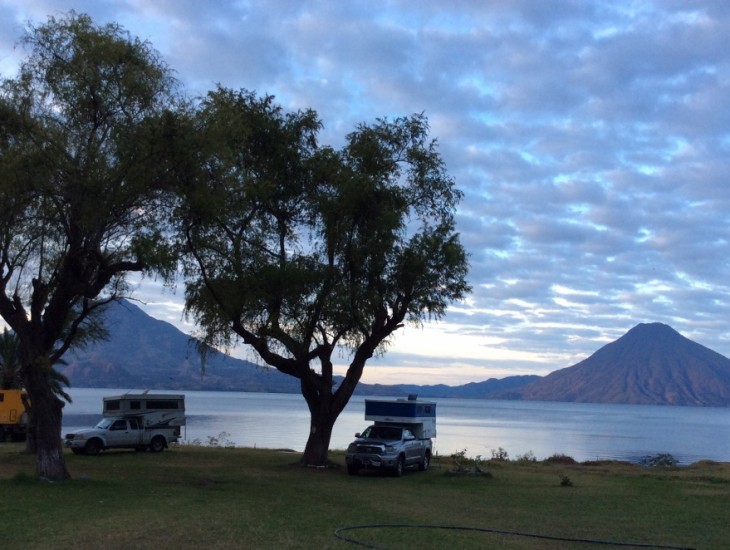
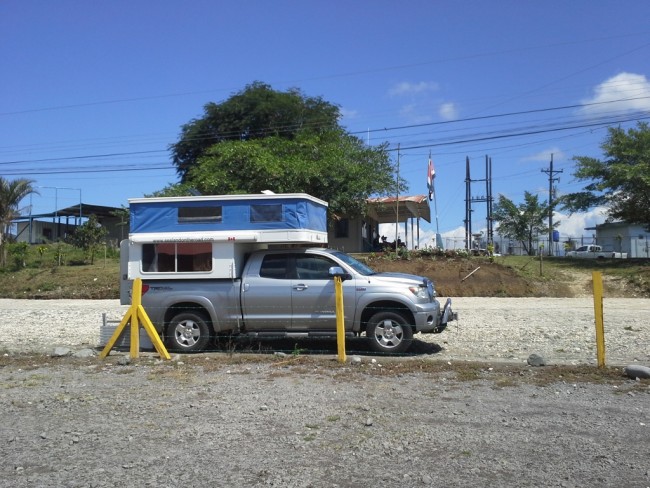
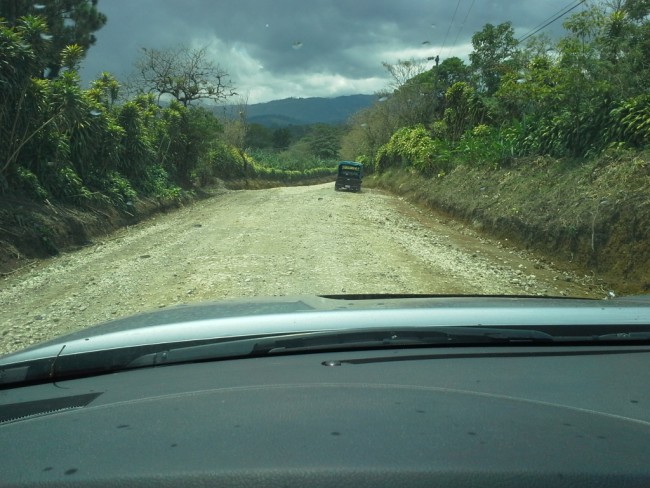

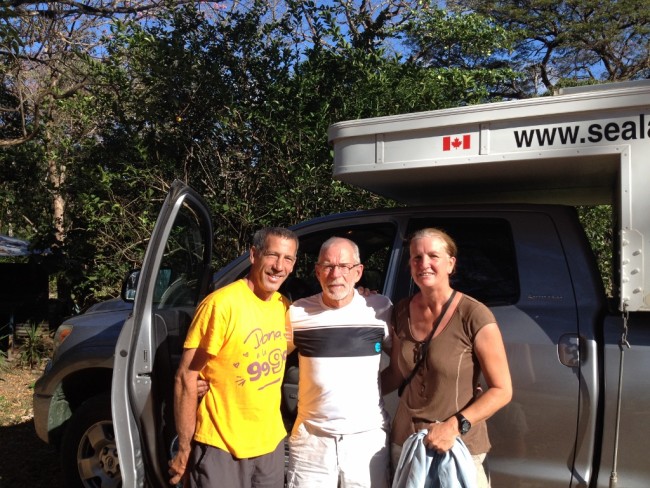
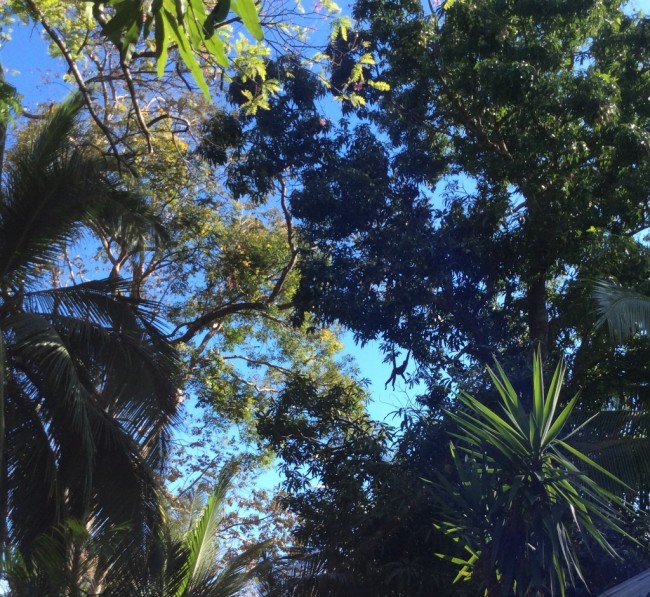
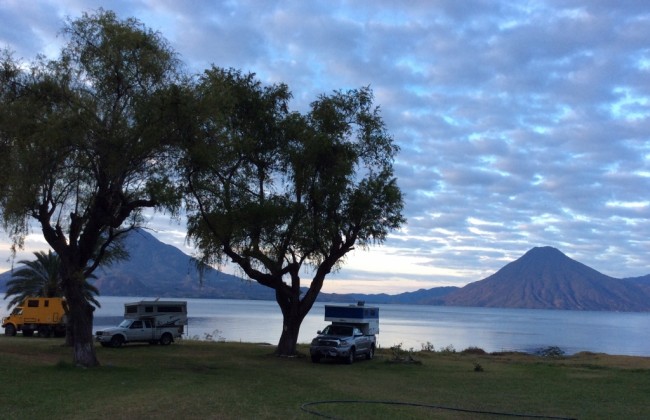
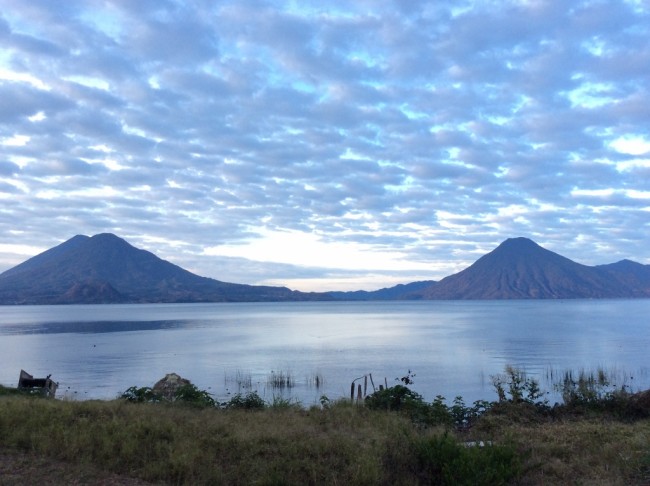
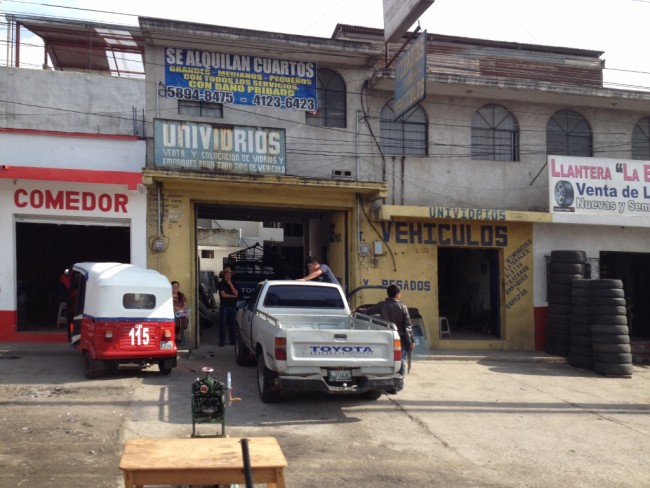
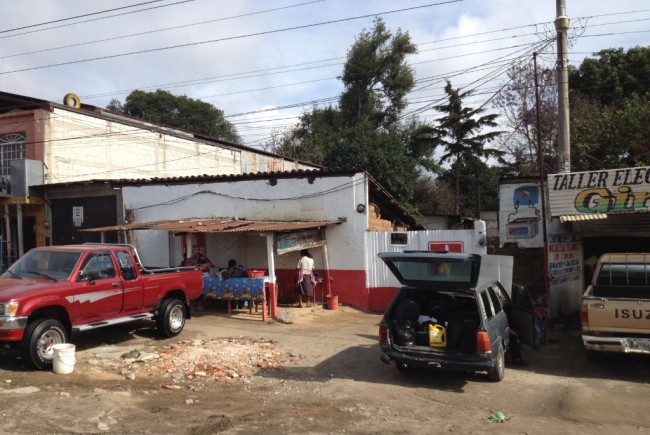
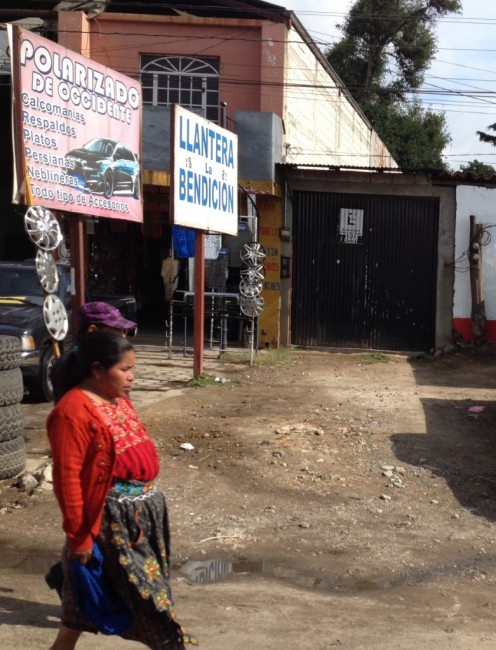
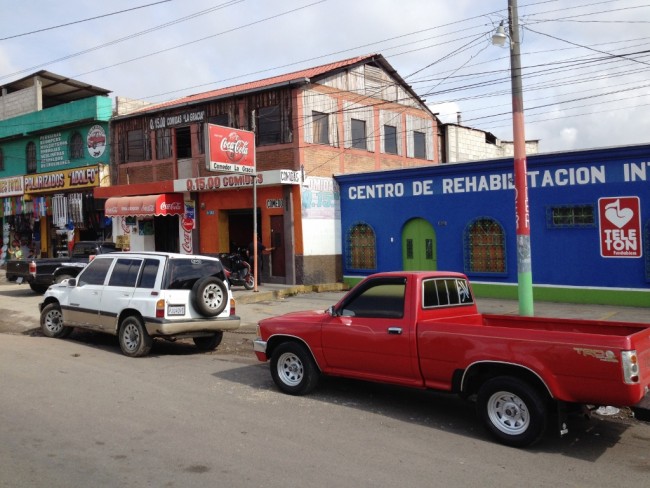
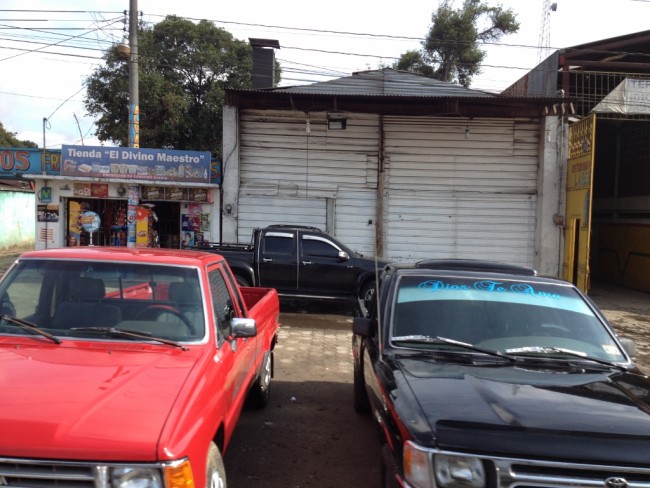
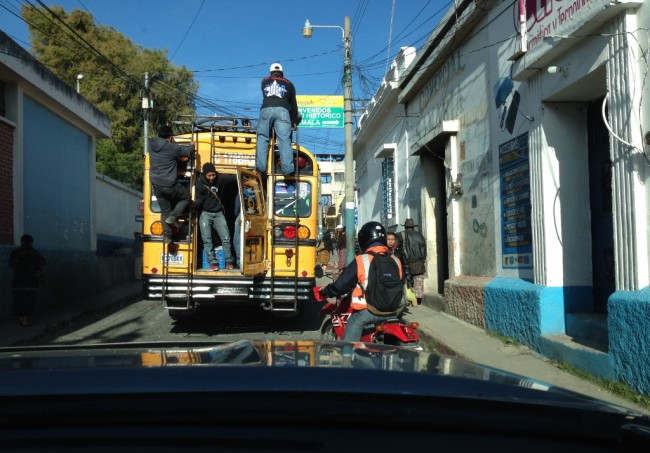
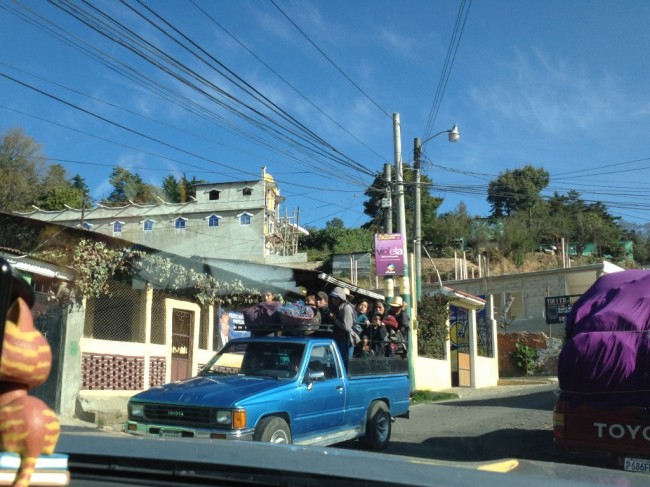
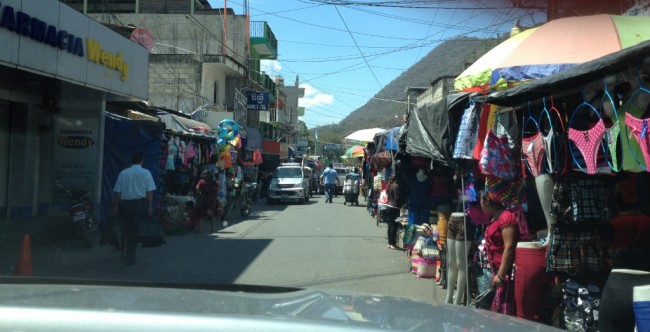
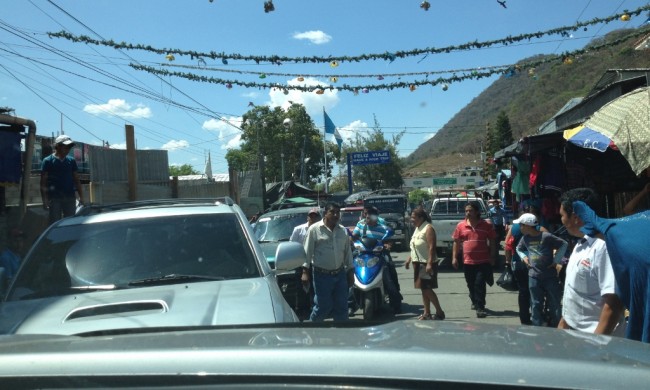
On your way through the states are you going to be in the Phoenix area? If so let us know when
and we would love to have you stay with us. I’m going up to YBL later today to have the autopilot
Worked on. Will be back in Scottsdale on the 7th but Lynne will be there today (April 5th).
Bill & Lynne